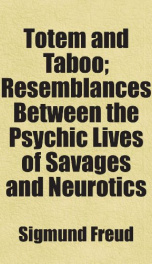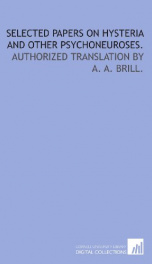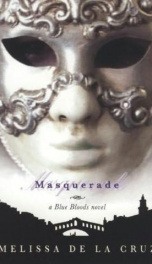Freud Sigmund

Sigmund Freud (German pronunciation: [ˈziːkmʊnt ˈfʁɔʏt]), born Sigismund Schlomo Freud (May 6, 1856 – September 23, 1939), was an Austrian neurologist who founded the psychoanalytic school of psychology.[1] Freud is best known for his theories of the unconscious mind and the defense mechanism of repression and for creating the clinical practice of psychoanalysis for treating psychopathology through dialogue between a patient and a psychoanalyst. Freud is also renowned for his redefinition of sexual desire as the primary motivational energy of human life, as well as his therapeutic techniques, including the use of free association, his theory of transference in the therapeutic relationship, and the interpretation of dreams as sources of insight into unconscious desires. He was also an early neurological researcher into cerebral palsy. While many of Freud's ideas have fallen out of favor or have been modified by Neo-Freudians, and modern advances in the field of psychology have shown flaws in many of his theories, Freud's work remains important in the history of clinical psychodynamic approaches. In academia, his ideas continue to influence the humanities and some social sciences. Sigmund Freud was born on May 6, 1856 to Galician Jewish[2] parents in the Moravian town of Příbor, Austrian Empire, which is now part of the Czech Republic. His father Jakob[3] was 41, a wool merchant, and had two children by a previous marriage. His mother Amalié (née Nathansohn), the third wife of Jakob, was 21. He was the first of their eight children and owing to his precocious intellect, his parents favoured him over his siblings from the early stages of his childhood. Despite their poverty, they sacrificed everything to give him a proper education. Due to the economic crisis of 1857, Freud's father lost his business, and the family moved to Leipzig before settling in Vienna. In 1865, Sigmund entered the Leopoldstädter Kommunal-Realgymnasium, a prominent high school. Freud was an outstanding pupil and graduated the Matura in 1873 with honors. After planning to study law, Freud joined the medical faculty at University of Vienna to study under Darwinist Prof. Karl Claus.[4] At that time, eel life history was still unknown. In search for their male sex organs, Freud spent four weeks at the Austrian zoological research station in Trieste, dissecting hundreds of eels without finding more than his predecessors had. In 1876, he published his first paper about "the testicles of eels" in the Mitteilungen der österreichischen Akademie der Wissenschaften, conceding that he could not solve the matter. In 1874, the concept of "psychodynamics" was proposed with the publication of Lectures on Physiology by German physiologist Ernst Wilhelm von Brücke who, in coordination with physicist Hermann von Helmholtz, one of the formulators of the first law of thermodynamics (conservation of energy), supposed that all living organisms are energy-systems also governed by this principle. During this year, at the University of Vienna, Brücke served as supervisor for first-year medical student Sigmund Freud who adopted this new "dynamic" physiology. In his Lectures on Physiology, Brücke set forth the radical view that the living organism is a dynamic system to which the laws of chemistry and physics apply.[5] This was the starting point for Freud's dynamic psychology of the mind and its relation to the unconscious.[5] The origins of Freud’s basic model, based on the fundamentals of chemistry and physics, according to John Bowlby, stems from Brücke, Meynert, Breuer, Helmholtz, and Herbart.[6] In 1879, Freud interrupted his studies to complete his one year of obligatory military service, and in 1881 he received his Dr. med. (M.D.) with the thesis Über das Rückenmark niederer Fischarten ("on the spinal cord of lower fish species"). In October 1885 Freud went to Paris on a traveling fellowship to study with Europe's most renowned neurologist, Jean Martin Charcot. He was later to remember the experience of this stay as catalytic in turning him toward the practice of medical psychopathology and away from a less financially promising career in research neurology.[7] Charcot specialised in the study of hysteria and its susceptibility to hypnosis, which he frequently demonstrated with patients on stage in front of an audience. Freud later turned away from hypnosis as a potential cure, favouring free association and dream analysis.[8] Charcot himself questioned his own work on hysteria towards the end of his life.[9] After opening his own medical practice, specializing in neurology, Freud married Martha Bernays in 1886. Her father Berman was the son of Isaac Bernays, chief rabbi in Hamburg. After experimenting with hypnosis on his neurotic patients, Freud abandoned this form of treatment as it proved ineffective for many, in favor of a treatment where the patient talked through his or her problems. This came to be known as the "talking cure", as the ultimate goal of this talking was to locate and release powerful emotional energy that had initially been rejected, and imprisoned in the unconscious mind. Freud called this denial of emotions "repression", and he believed that it was often damaging to the normal functioning of the psyche, and could also retard physical functioning as well, which he described as "psychosomatic" symptoms. (The term "talking cure" was initially coined by the patient Anna O. who was treated by Freud's colleague Josef Breuer.) The "talking cure" is widely seen as the basis of psychoanalysis.[10] Carl Jung initiated the rumor that a romantic relationship may have developed between Freud and his sister-in-law, Minna Bernays, who had moved into Freud's apartment at 19 Berggasse in 1896.[11] (Psychologist Hans Eysenck has suggested that the affair resulted in a pregnancy and a subsequent abortion for Miss Bernays.[12]) The publication in 2006 of a Swiss hotel log, dated 13 August 1898, has suggested to some Freudian scholars (including Peter Gay) that there was a factual basis to these rumors.[13] In his forties, Freud "had numerous psychosomatic disorders as well as exaggerated fears of dying and other phobias" (Corey 2001, p. 67). During this time Freud was involved in the task of exploring his own dreams, memories, and the dynamics of his personality development. During this self-analysis, he came to realize the hostility he felt towards his father (Jacob Freud), who had died in 1896,[14] and "he also recalled his childhood sexual feelings for his mother (Amalia Freud), who was attractive, warm, and protective" (Corey 2001, p. 67) considers this time of emotional difficulty to be the most creative time in Freud's life. After the publication of Freud's books in 1900 and 1902, interest in his theories began to grow, and a circle of supporters developed in the following period. Freud often clashed with those supporters who critiqued his theories, however, the most famous being Carl Jung, who had originally supported Freud's ideas. Part of the reason for the fallout between Freud and Jung was the latter's interest and commitment to religion and mysticism, which Freud saw as unscientific.[15] As if to highlight how important nicotine and fine cigars were to Freud for his cognitive productivity, during a time that World War I hit Austria hard, he wrote in a letter: [16] In 1930, Freud received the Goethe Prize in appreciation of his contribution to psychology and to German literary culture. Three years later the Nazis took control of Germany and Freud's books featured prominently among those burned and destroyed by the Nazis. Freud quipped: At that time, he could not have foreseen that all of his many sisters would perish in The Holocaust. In March 1938, Nazi Germany annexed Austria in the Anschluss. This led to violent outbursts of anti-Semitism in Vienna, and Freud and his family received visits from the Gestapo. Freud decided to go into exile "to die in freedom". He and his family left Vienna in June 1938 and moved to 20 Maresfield Gardens, Hampstead, London. There is a statue of him at the corner of Belsize Lane and Fitzjohn's Avenue, near Swiss Cottage. A heavy cigar smoker, Freud endured more than 30 operations during his life due to oral cancer. In September 1939 he prevailed on his doctor and friend Max Schur to assist him in suicide. After reading Balzac's La Peau de chagrin in a single sitting he said, "My dear Schur, you certainly remember our first talk. You promised me then not to forsake me when my time comes. Now it is nothing but torture and makes no sense any more." Schur administered three doses of morphine over many hours that resulted in Freud's death on 23 September 1939.[18] Three days after his death, Freud's body was cremated at Golders Green Crematorium in England during a service attended by Austrian refugees, including the author Stefan Zweig. His ashes were later placed in the crematorium's columbarium. They rest in an ancient Greek urn that Freud received as a present from Marie Bonaparte, and which he had kept in his study in Vienna for many years. After Martha Freud's death in 1951, her ashes were also placed in that urn. Golders Green Crematorium has since also become the final resting place for Anna Freud and her lifelong friend Dorothy Burlingham, as well as for several other members of the Freud family. Freud has been influential in two related but distinct ways. He simultaneously developed a theory of how the human mind is organized and operates internally, and a theory of how human behavior both conditions and results from this particular theoretical understanding. This led him to favor certain clinical techniques for attempting to help cure psychopathology. He theorized that personality is developed by the person's childhood experiences. Freud began his study of medicine at the University of Vienna but took eight years to complete his studies due to his interest in neurophysiological research, specifically investigation of the sexual anatomy of eels and the physiology of the fish nervous system (as noted above). He entered private practice in neurology for financial reasons, receiving his M.D. degree in 1881 at the age of 25.[20] He was also an early researcher in the field of cerebral palsy, which was then known as "cerebral paralysis." He published several medical papers on the topic, and showed that the disease existed well before other researchers of the period began to notice and study it. He also suggested that William Little, the man who first identified cerebral palsy, was wrong about lack of oxygen during the birth process being a cause. Instead, he suggested that complications in birth were only a symptom of the problem.
do you like this author?
What readers are saying
What do you think? Write your own comment on this book!
write a commentWhat readers are saying
What do you think? Write your own comment on this author!
write a commentBook list

Die infantile Wiederkehr des TotemismusÜber einige Übereinstimmungen im Seelenleben der Wildenund der Neurotiker IV
Series:
Unknown
Year:
Unknown
Raiting:
3/5
Show more
add to favoritesadd In favorites

Animismus,Magie und Allmacht der GedankenÜber einige Übereinstimmungen im Seelenleben der Wildenund der Neurotiker III
Series:
Unknown
Year:
Unknown
Raiting:
5/5
Show more
add to favoritesadd In favorites
Book list

Die infantile Wiederkehr des TotemismusÜber einige Übereinstimmungen im Seelenleben der Wildenund der Neurotiker IV
Series:
Unknown
Year:
Unknown
Raiting:
3/5
Show more
add to favoritesadd In favorites

Animismus,Magie und Allmacht der GedankenÜber einige Übereinstimmungen im Seelenleben der Wildenund der Neurotiker III
Series:
Unknown
Year:
Unknown
Raiting:
5/5
Show more
add to favoritesadd In favorites

Das Tabu und die Ambivalenz der GefühlsregungenÜber einige Übereinstimmungen im Seelenleben der Wildenund der Neurotiker II
Series:
Unknown
Year:
Unknown
Raiting:
4.5/5
Show more
add to favoritesadd In favorites

Die InzestscheuÜber einige Übereinstimmungen im Seelenleben der Wildenund der Neurotiker I
Series:
Unknown
Year:
Unknown
Raiting:
3.5/5
Show more
add to favoritesadd In favorites

Totem und TabuEinige Übereinstimmungen im Seelenleben der Wilden und der Neurotiker
Series:
Unknown
Year:
Unknown
Raiting:
4.5/5
Show more
add to favoritesadd In favorites

Der Wahn und die Träume in W. Jensens »Gradiva«
Series:
Unknown
Year:
Unknown
Raiting:
3.5/5
Show more
add to favoritesadd In favorites

Leonardo da VinciA Psychosexual Study of an Infantile Reminiscence
Series:
Unknown
Year:
Unknown
Raiting:
4/5
Show more
add to favoritesadd In favorites

Traum und TelepathieVortrag in der Wiener psychoanalytischen Vereinigung
Series:
Unknown
Year:
Unknown
Raiting:
4.5/5
Show more
add to favoritesadd In favorites

Zur Psychopathologie des AlltagslebensÜber Vergessen,Versprechen,Vergreifen,Aberglaube und Irrtum
Series:
Unknown
Year:
Unknown
Raiting:
2.5/5
Show more
add to favoritesadd In favorites

totem and taboo resemblances between the psychic lives of savages and neurotics
Series:
Unknown
Year:
Unknown
Raiting:
5/5
A famous psychologist Sigmund Freud (1856-1939) has devoted all his life to studying psychoanalysis and psychology of people from the ancient times at the early stages of the history of the human race and then its development through different stages of civilization. His investigations and ideas can be found in the work called Totem and Taboo Resemblances between the Psychic Lives of Savages and Neurotics. Sigmund Freud compares the behavior of original tribal groups with behavior of neurotics. He also studies different taboos which were popular in tribal life, for example, incest taboo. The scientist proves that the incest taboo is very similar to the rituals of compulsion among neurotics who are also struggling with their emotions in a similar way like primitive people were struggling with their desire of incest. As we see, the way made by original taboos is complicated but it gave the birth to such reactions on certain things that we experience in modern society. The ideas of Oedipal complex are also introduces in his research in the form we have it now and in the form in which it was present in primitive societies. At ancient times young boys had a strong desire to murder their father because they saw them as their competitors for the mothers' attention. The book is full of interesting suggestions and bright ideas and is definitely worth reading by those who are interested in psychology and in the basis of our modern society. Of course, Freud's ideas are often disputed today but it is difficult to deny his contribution into the development of psychology, religion studies and anthropology.
Show more
add to favoritesadd In favorites
Show more

totem and taboo some points of agreement between the mental lives of savages a
Series:
Unknown
Year:
Unknown
Raiting:
4.5/5
“Totem and Taboo” is one of the most interesting and conceptual works by Sigmund Freud, a Jewish-Austrian neurologist, known for creating the clinical practice of psychoanalysis for treating psychopathology through dialogue between a patient. According to the author’s words, the book appears to be the first attempt to apply the point of view and the results of psychoanalysis to unascertained problems, concerning the psychology of primitive culture and religion. Freud, in a scale analysis and research, sets out a theory of origin of moral and religious regulations.
The book, still remaining an utter classic of modern psychoanalysis, deserves rapt attention of the reader.
Show more
add to favoritesadd In favorites
The book, still remaining an utter classic of modern psychoanalysis, deserves rapt attention of the reader.
Show more

selected papers on hysteria and other psychoneuroses
Series:
Unknown
Year:
Unknown
Raiting:
4/5
Originally published in 1916. This volume from the Cornell University Library's print collections was scanned on an APT BookScan and converted to JPG 2000 format by Kirtas Technologies. All titles scanned cover to cover and pages may include marks, notations and other marginalia present in the original volume.
Show more
add to favoritesadd In favorites
What readers are saying
What do you think? Write your own comment on this author!
write a commentif you like Freud Sigmund try:
readers also enjoyed
What readers are saying
What do you think? Write your own comment on this author!
write a commentGenre
if you like Freud Sigmund try:
readers also enjoyed
Do you want to read a book that interests you? It’s EASY!
Create an account and send a request for reading to other users on the Webpage of the book!


















